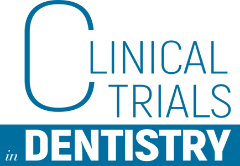Articles
EFFICACY OF FOUR MOTIVATIONAL TECHNIQUES FOR IMPROVING ORAL HYGIENE. ONE-YEAR FOLLOW-UP OF A RANDOMISED CONTROLLED TRIAL
PURPOSE. The aim of this randomised controlled trial with blinded examiner was to compare the efficacy of four different methods of enhancing oral hygiene motivation in: 1) modifying patient behaviour, 2) reducing the full-mouth plaque score (FMPS) and full- mouth bleeding score (FMBS), 3) amount of the intervention time required, 4) the degree of patient satisfaction at one-year follow-up.
MATERIALS AND METHODS. In a private practice, 100 subjects aged 18–75 years with at least 20 teeth/implants present and a FMPS ≥40% were consecutively recruited. From baseline up to one-year of follow-up, the subjects randomly underwent one of four diffe- rent oral hygiene motivational techniques, namely (i) standard instructions on oral hygiene (SIOH); ii) reading a pamphlet (P); iii) watching a video (V); or iv) Brief Motivational inter- viewing (BMI). The outcome variables considered were reduction in FMPS, reduction in FMBS, frequency of daily tooth brushing, frequency of daily flossing, motivational intervention time, degree of patient satisfaction, patient perception of oral health (by means of a questionnaire), and number of teeth lost for each method. A sole operator carried out all motivational sessions and/or professional oral hygiene procedures at baseline and at 1, 3, 6 and 12 months. Another operator, blinded to the methods used, recorded the variables at baseline, and at 6 and 12 months.
RESULTS. At 12-month follow-up, there were no significant differences between the four tested methods in either FMPS (-16.7 for SIOH, -18.8 for V, -20.1 for P, and -27.7 for BMI; P = 0.0730), FMBS (-3.0 for SIOH, -2.3 for V, -4.2 for P, and -2.9 for BMI; P=0.5776), degree of patient satisfaction (P = 0.2410), improvement in perception of oral health (P = 0.2067), frequency of daily flossing (P = 0.2500), or number of teeth lost (P = 0.5296). Although the total time required for motivation was significantly greater for the BMI than the other techniques (P <0.0001), the frequency of daily tooth brushing significantly increased after BMI as compared to SIOH and V (the difference between BMI and SIOH was 0.6; 95%CI from 0.2 to 1.0, and the difference between BMI and V was 0.5 95%CI from 0.1 to 0.9; P = 0.0011).
CONCLUSIONS. All tested methods improved FMPS and FMBS, and were appreciated by all subjects. The change in patient behaviour was more pronounced in the BMI group, but the intervention time required was greater than in the other techniques; nevertheless it was compatible with a professional oral hygiene session of one-hour duration.



